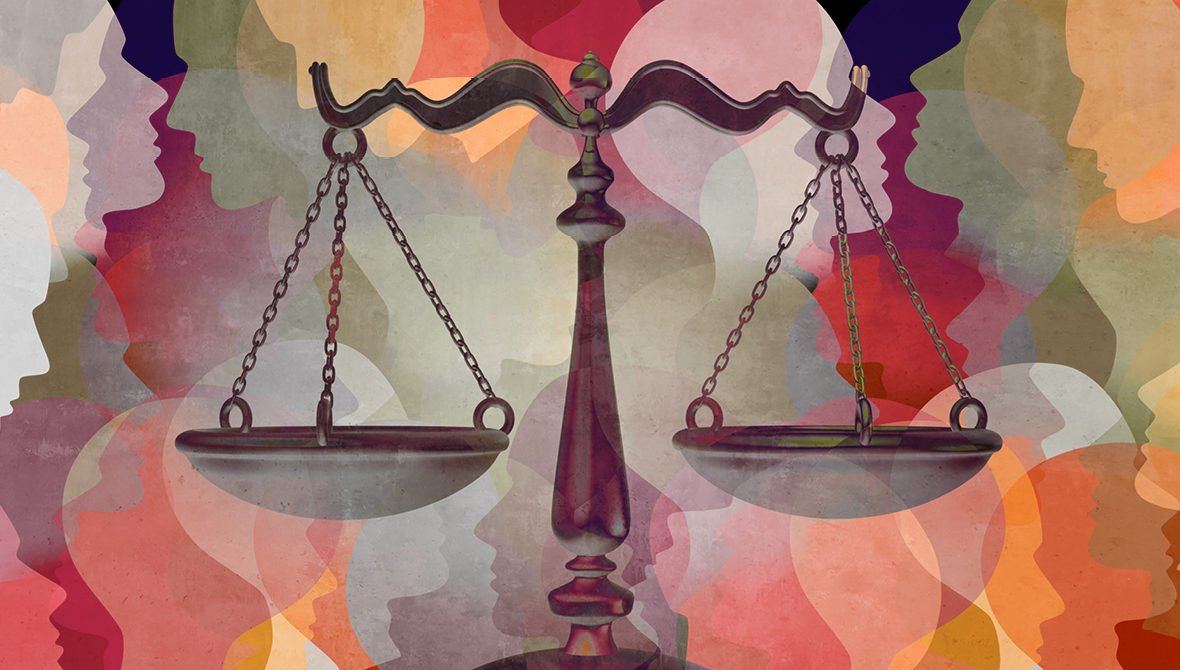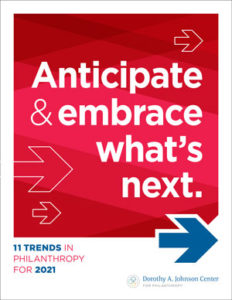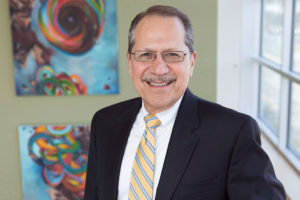Philanthropy and Reparations: Righting the Past


 Across the nonprofit ecosystem, the imperative to acknowledge and right the deep wrongs of our own institutional histories is becoming more urgent and prompting more dialogue and action. Reparations for the descendants of enslaved persons are again gaining attention, especially after the racial unrest that erupted in 2020. The conversation is not new; it’s been happening since the Civil War. However, it is experiencing a resurgence that is likely to affect communities, governments, and our colleagues in philanthropy.
Across the nonprofit ecosystem, the imperative to acknowledge and right the deep wrongs of our own institutional histories is becoming more urgent and prompting more dialogue and action. Reparations for the descendants of enslaved persons are again gaining attention, especially after the racial unrest that erupted in 2020. The conversation is not new; it’s been happening since the Civil War. However, it is experiencing a resurgence that is likely to affect communities, governments, and our colleagues in philanthropy.
The current debate about reparations was elevated into the national conversation in June 2014 when Ta-Nehisi Coates published “The Case for Reparations” in The Atlantic. His essay came out only a few weeks before the Black Lives Matter movement emerged after the death of Michael Brown in Ferguson, Missouri, and started gaining momentum.
To date, the struggle to compensate specific groups for historical crimes and wrongdoings made against them has mostly been experimental across the globe (Hjelmgaard, 2020). Many countries, such as England, Kuwait, Colombia, and Germany have sought to implement reparations policies, including giving direct monetary payments.
In the United States, Congress established the Indian Claims Commission Act at the end of World War II to address Native American grievances related to treaty violations. In 1988 President Ronald Reagan signed the Civil Liberties Act to compensate more than 120,000 Japanese Americans who were incarcerated during World War II (Hjelmgaard, 2020).
However, historically, taxpayers have been resistant to foot the bill for direct-payment reparations. Estimates put the total cost for such a plan at $13 trillion, with an estimated 40 million Americans able to claim descendancy from enslaved persons (Hjelmgaard, 2020). Even during a year of historic public support for racial equity movements, a Reuters/Ipsos poll released in June 2020 showed only 20% of Americans in favor of cash reparations (Johnson).
As we noted in 11 Trends in Philanthropy for 2020, practitioners and the public are increasingly aware of where philanthropic dollars originate — often from legacies of worker exploitation, racial exploitation, and other “tainted” sources — and questioning the legitimacy of philanthropy itself, as a result (Moody & Pratt, 2020).
The legacies of the slave economy — segregation, systemic and cultural racism, mass incarceration — are largely responsible for the historically uneven distribution of wealth in the U.S. As of 2016, an average Black family had a net worth $800,000 less than the average white family (Travers, 2019). Black Americans are also less likely to own a home than other racial and ethnic groups, and the Black poverty rate is double the white rate (Hjelmgaard, 2020). The legacy of the well-documented practice of red-lining is very apparent in the segregated neighborhoods and wealth divides we see today.
Ryan Schlegel, director of research at the National Committee for Responsive Philanthropy (NCRP), has argued that since slavery played a major role “in the economic development of the country, it really ought to be a priority for every foundation to think critically about what their responsibility might be to begin to make amends for the crime that generated so much of our shared wealth” (Travers, 2019, para. 3).
Dana Kawaoka-Chen, executive director of Justice Funders, concurs, noting that “there needs to be a shift from wealth and power being accumulated within institutions toward a new vision where philanthropy is about redistributing wealth, democratizing power, and shifting economic control to the community” (Daniels and Gose, 2019, para. 9). While philanthropy may not be set up to support reparations in the form of direct cash payments, there are many steps funders can take — and currently are taking — to rebalance that scale.
“While philanthropy may not be set up to support reparations in the form of direct cash payments, there are many steps funders can take — and currently are taking — to rebalance that scale.”
The Andrew W. Mellon Foundation is a good example of a family’s slavery-linked history (plantation owners with enslaved people) leading to a desire to make amends. The acknowledgment of their inequitable accumulation of wealth turned into grant distributions to Georgetown University and William & Mary for racial justice initiatives and for research to inform the Memorial to African Americans Enslaved by William & Mary (Travers, 2019).
Kawaoka-Chen’s Justice Funders includes some of the largest foundations in the country (e.g., California Endowment, Marguerite Casey Foundation, and Irene S. Scully Family Foundation) that are committed to seriously looking at how they accumulated wealth and power over generations. They are willing to let other people decide how to spend their money, regardless of the original instructions of their founders. Foundations like Rockefeller and Ford, alongside many family foundations like Carnegie and Mellon, have struggled to reconcile the intentions of founders whose pronouncements reflected the prejudices of their times with the modern aims and sensibilities of today’s staff and family members.
Foundations and individual donors have been supporting Black-focused funds to some degree for decades. Unfortunately, given the growing magnitude of the inequities, incremental approaches will fail to adequately address the degree to which our social and economic systems are out of alignment. Philanthropy is being called on to make bolder investments in disfavored communities (Gunther, 2020). These can take the form of leading and funding efforts pertaining to awareness, advocacy, education, and leadership development, especially for grassroots organizations. So far in 2020, foundations do seem to be stepping up — as of August 6, private foundations had pledged over $1 billion in funds for racial justice initiatives (Daniels).
Still, critics point out that philanthropy could, and should, go further. Billionaire MacKenzie Scott recently gave $1.7 billion to social change organizations, expressing a personal belief that “anyone’s personal wealth is the product of a collective effort, and of social structures which present opportunities to some people, and obstacles to countless others” (2020, para. 1). Edgar Villanueva believes that recognition of inequitable sources of wealth is a good start (Villanueva & Collins, 2020). But, according to Jessie Spector who remarked in The Nation, “The fundamental challenge is that philanthropy is voluntary. It is not a long-term solution to society’s ills to rely on the benevolence of the wealthy, even those who are focused on social justice philanthropy and ending economic inequality” (2016, para. 6).
Though a growing number of foundations practice social justice philanthropy — or have adopted other strategies like trust-based philanthropy and participatory grantmaking, aimed at elevating community voices and strategies in funding decisions — most individual and institutional philanthropists are simply not in the business of confronting the economic inequality that undergirds their power. According to NCRP, only 14% percent of annual foundation funding goes to “social change,” which it defines broadly as “work for structural change in order to increase the opportunity of those who are the least well off politically, economically and socially” (Spector, 2016, para. 5).
This trend in philanthropy’s role in achieving reparations through investments into Black communities will undoubtedly continue. The question will be whether or not the number of foundations and the amount allocated for addressing inequities will increase going forward from 2020’s surge, or whether philanthropy will revert to old habits.


Coates, T. (2014, June). The case for reparations. The Atlantic. https://www.theatlantic.com/magazine/archive/2014/06/the-case-for-reparations/361631
Daniels, A. (2020, August 6). Private foundation pledges top $1 billion for racial justice. Chronicle of Philanthropy. https://www.philanthropy.com/article/Private-Foundation-Pledges-Top/249259
Daniels, A., & Gose, B. (2019, April 2). Balance of Power. Chronicle of Philanthropy. https://www.philanthropy.com/article/balance-of-power
Gunther, M. (2020, October 13). Foundations are sending more dollars to donor-advised funds, Chronicle analysis finds. Chronicle of Philanthropy. https://www.philanthropy.com/article/foundations-are-sending-more-dollars-to-donor-advised-funds-chronicle-analysis-finds
Hjelmgaard, K. (2020, July 10). Reparations bill gets new attention amid BLM. Could other nations provide a blueprint? USA TODAY. https://www.usatoday.com/story/news/world/2020/07/10/slavery-reparations-bill-spurs-new-debate-other-nations-model/5396340002
Johnson, K. (2020, June 25). U.S. public more aware of racial inequality but still rejects reparations: Reuters/Ipsos polling. Reuters. https://www.reuters.com/article/us-usa-economy-reparations-poll/u-s-public-more-aware-of-racial-inequality-but-still-rejects-reparations-reuters-ipsos-polling-idUSKBN23W1NG
Moody, M., & Pratt, M. (2020). Tainted money and tainted donors: A growing crisis? 11 trends in philanthropy for 2020. Dorothy A. Johnson Center for Philanthropy. https://johnsoncenter.org/blog/tainted-money-and-tainted-donors-a-growing-crisis
Scott, M. (2020, July 28). 116 organizations driving change. Medium. https://mackenzie-scott.medium.com/116-organizations-driving-change-67354c6d733d
Spector, J. (2016, July 21). The future of philanthropy: The game changer. The Nation. https://www.thenation.com/article/archive/the-future-of-philanthropists
Travers, J. (2019, December 19). Making amends: How funders can address slavery’s legacy. Inside Philanthropy. https://www.insidephilanthropy.com/home/2019/9/19/making-amends-how-funders-can-address-slaverys-legacy
Villaneuva, E., & Collins, C. (2020, September 29). Opinion: it’s time for wealthy donors to embrace reparations, not more charity. MarketWatch. https://www.marketwatch.com/story/its-time-for-wealthy-donors-to-embrace-reparations-not-more-charity-11601384684